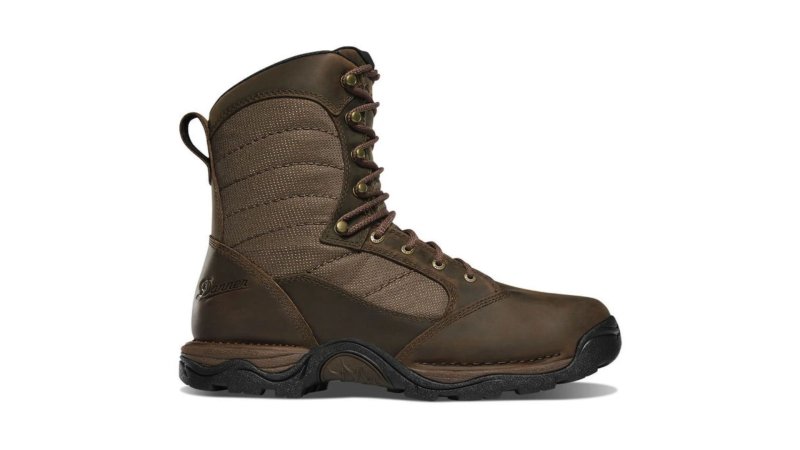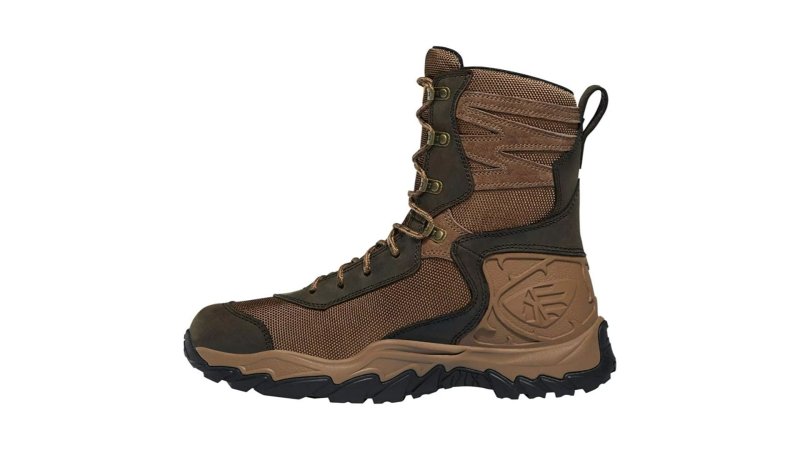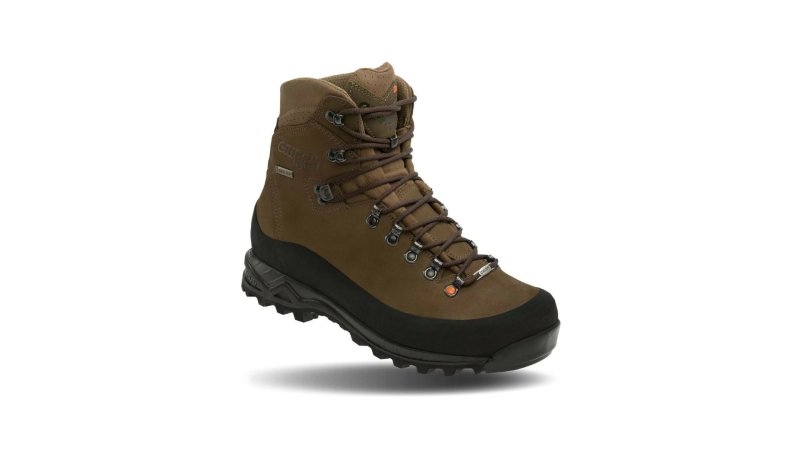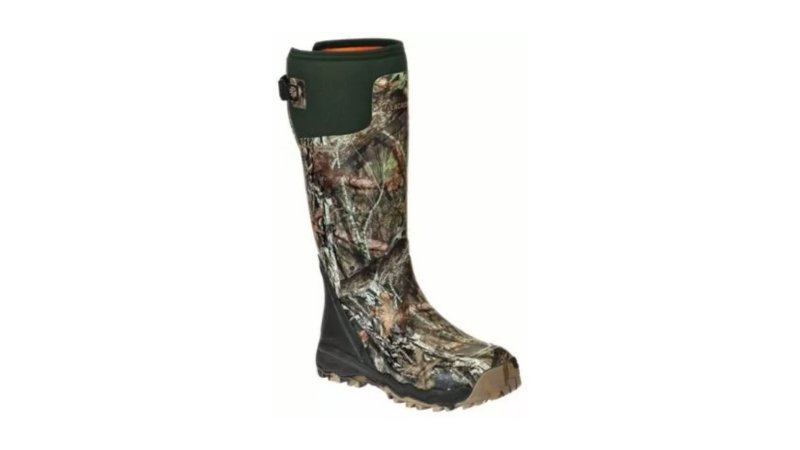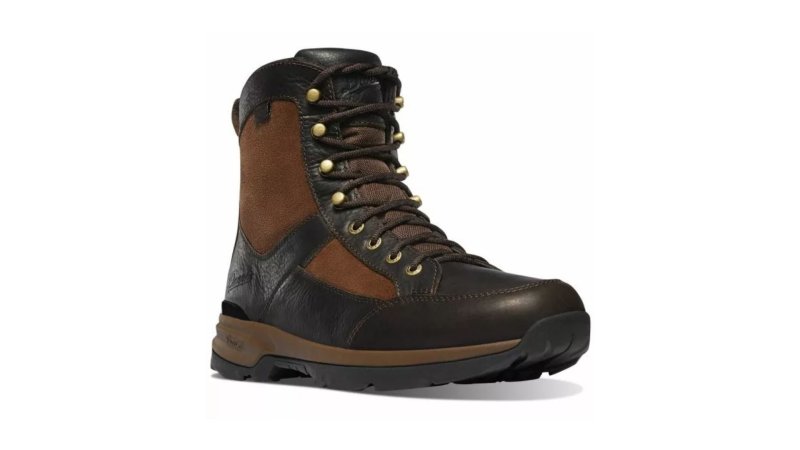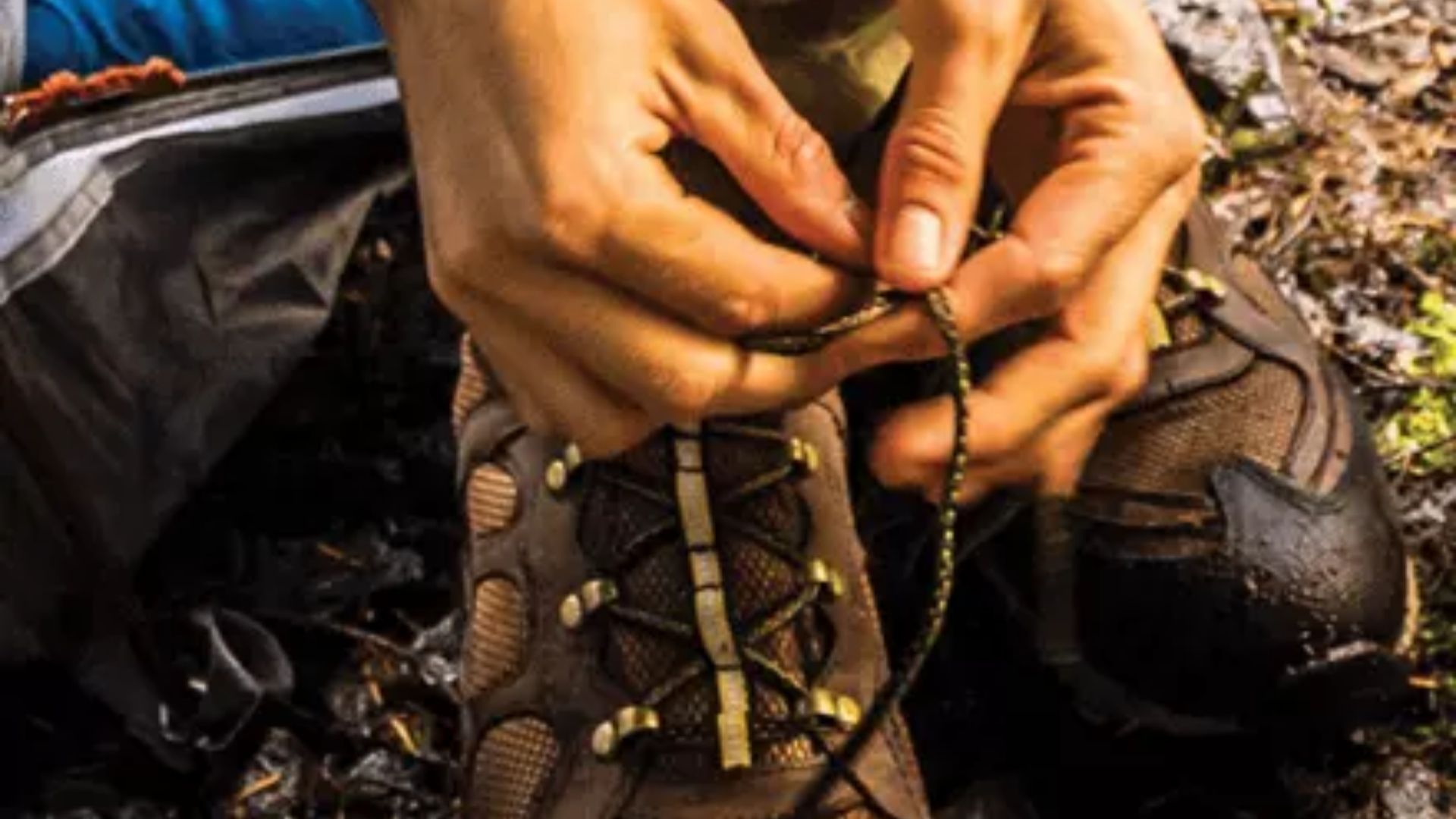

We may earn revenue from the products available on this page and participate in affiliate programs.
Besides your head, your feet are your most valuable asset in the field, so a quality pair of hunting boots are must-have gear. If you plan to walk for miles in pursuit of coyotes or pheasants, you’ll want a pair of boots built to absorb the impact of hundreds of miles over hilly, sometimes muddy, terrain. Looking to wait it out in a blind for the next flock of mallards or trophy whitetail to come by? A well-insulated pair of rubber deer hunting boots or duck boots should be at the top of your shopping list. Need a pair of elk hunting boots for your next backpacking hunt in the Bighorns? You’ll want the best of both worlds! No matter what the game or terrain, we’ve got you covered with this list of tough, capable, and comfortable hunting boots.
Methodology
Picking a flavor for a single-scoop cone at Baskin-Robbins is easier than picking a hunting boot. With so many combinations of boot types, features, and manufacturers, a filtering process is the only way to avoid true analysis paralysis and willy-nilly purchases. As such, I looked for boots with a combination of comfort, traction, toughness, durability, and weather resistance.
By nature of living in Colorado, I primarily focused on hiking-style boots designed to take down game commonly found in the West and Midwest (mostly big game, turkey, coyotes, and upland birds). Whenever possible, I tried to find boots with a women’s version or direct equivalent, although this was not nearly as easy as it sounds.
Also, I relied heavily on hands-on reviews and similar written materials to help evaluate each boot. As such, I want to give a shoutout to Chippewa Boots, BlackOvis, Brian Call: Gritty, The Element, Field & Stream, Game & Fish, tworeviews by GearJunkie, GOHUNT, #Hunt365, Hunting Gear Deals, Hunting The Outdoors, LAND&LEGACY, Survivalmag, Outdoor Life, Palmetto Prepared, Petersen’s Hunting, Project Upland, Shoot Like A Girl, Ultimate Upland, WhitetailDNA, and The Women’s Outdoor News.
Best Overall
Danner Pronghorn
Pros
- Very comfortable
- Tough
- Provides good support
- Virtually no break-in period
Cons
- Expensive
- Relatively heavy
- No women’s version
Product Specs
- Boot type: Hiking-style
- Construction materials: Leather and nylon
- Insulation: Uninsulated; 400-, 800-, and 1,200-gram PrimaLoft available
- Weight (pair): 3.3 pounds
- Available in women’s: No
Best Value
LaCrosse Windrose
Pros
- Affordable
- Comfortable
- Good weatherproofing
- Women’s version available
Cons
- Relatively heavy
- Not the most durable boot
- Women’s boot lacks 1000-gram insulation option
Product Specs
- Boot type: Hiking-style
- Construction materials: Leather, nylon, and rubber
- Insulation: Uninsulated; 600- and 1,000-gram (men’s only) Ultra available
- Weight (pair): 3.3 pounds
- Available in women’s: Yes
Editor’s Choice
Crispi Nevada Legend GTX
Pros
- Very comfortable
- Extremely tough, durable; can be resoled
- Retains waterproofing even after years of use
- Offers enhanced ankle support
Cons
- Very expensive, heavy
- Light insulation not suited to still or low-temperature hunts
- No direct women’s equivalent
Product Specs
- Boot type: Hiking-style
- Construction materials: Leather
- Insulation: 200-gram equivalent Gore; uninsulated available
- Weight (pair): 3.8 pounds
- Available in women’s: No
Best Lightweight
Irish Setter Vaprtrek
Pros
- Lightweight
- Short break-in period
- Odor-reduction treatment
- Can handle cold-weather hunts
Cons
- Not the most aggressive tread pattern
- Not fully waterproof; heavy when waterlogged
- Women’s version only available with 400-gram insulation
Product Specs
- Boot type: Hiking-style
- Construction materials: Leather and nylon
- Insulation: Uninsulated; 400-, 800-, and 1,200-gram PrimaLoft available
- Weight (pair): 2.4 pounds
- Available in women’s: Yes
Best Rubber
LaCrosse Alphaburly Pro
Pros
- Tough, durable
- Great traction
- Self-cleaning tread pattern
- Customizable fit
Cons
- A little pricey
- Heavy
- Finish rubs off relatively quickly
Product Specs
- Boot type: Rubber
- Construction materials: Natural rubber and neoprene
- Insulation: Uninsulated; 400-, 800-, 1000-, and 1,600-gram Thinsulate
- Ultra available Weight (pair): 4.8 pounds
- Available in women’s: Yes
Best Upland
Danner Recurve
Pros
- Relatively lightweight
- Comfortable
- Virtually no break-in period
- Versatile
Cons
- A little pricey
- Cannot be resoled
Product Specs
- Boot type: Upland
- Construction materials: Leather
- Insulation: Uninsulated; 400-gram Thinsulate Ultra available
- Weight (pair): 2.8 pounds
- Available in women’s: No
Our verdict on hunting boots
All in all, we love the Danner Pronghorn for its combination of comfort, performance, toughness, and versatility. Much of the same can also be said for our value pick, the LaCrosse Windrose. While it may not be the most durable, it has the distinct advantage of affordability, perfect for budget-conscious hunters.
What to consider when buying hunting boots
The variety of hunting boots on today’s market is far wider than the colors on the rainbow, so it helps to know what to look for. The hunting boot landscape is littered with boot types with everything ranging from classic rubber boots to high-speed, low-drag elk hunting boots. The available features also boggle the minds of the unprepared, so pay attention to a boot’s features before making a purchase.
Types of hunting boots
Due to the wide array of hunter, game, and hunting style combinations, we could write an entire article on hunting boot types, but we decided to simplify things a bit. As such, we divided things into the following categories: hiking-style, rubber, upland, and snake boots.
Hiking-style hunting boots
Hiking-style hunting boots are a western hunter’s go-to footwear. Big game, varmint, and turkey hunts in the western U.S. commonly take place out on wind-swept prairies or in the high-up woods, rugged mountains, or barren desert, and such hunts demand tough, lace-up boots with solid ankle support and properly aggressive tread patterns. While the specific terrain may vary, hiking-style hunting boots help hunters tackle rough, uneven ground with comfort and ease.
Like traditional hikers, these boots include a handful of activity-specific subcategories, such as backpacking (backcountry) and mountaineering (mountain or elk hunting) boots. Compared to their conventional counterparts, hiking-style hunting boots tend to be a little heavier, usually thanks to leather uppers, heavier insulation, scent-proof liners, and one or two other hunting-specific features.
Rubber hunting boots
Rubber-hunting boots are a common type of hunting footwear, especially in the southern, midwestern, and eastern U.S. These waterproof hunting boots are best for low-activity hunts thanks to their tendency to retain heat and to keep feet dry and warm in wet, cold environments, such as swamps, lakes, waterways, muddy fields, or soggy forests. Waterfowl hunters looking to bag ducks and geese appreciate the unique advantages of rubber hunting boots, and countless whitetail hunters choose rubber kicks as their go-to deer hunting boots.
While traditional rubber boots are built with hot, heavy stuff, many modern rubber hunting boots employ copious amounts of neoprene with a relatively thin coat of rubber over top. Compared to rubber, neoprene is lighter and more breathable, although these boots are still a far cry from mesh running shoes.
Upland hunting boots
Upland hunting boots are specifically designed for hunts that take place in the relatively dry, flat terrain found throughout the Midwest. Designed specifically for hunters pursuing quail, pheasants, and other game birds, upland boots are built to handle lots of walking across open fields, plains, and other similar terrains that aren’t extremely muddy.
These traditional boots may not be particularly common by today’s standards, but they are built to last, thanks to their (usually) old-school all-leather construction. Most use a lace-up design, although some employ a slip-on pattern instead with elasticized shafts and/or a cinch and buckle for added security. That said, newer upland boots look a bit more like hiking-style boots, albeit with much milder lugs.
Note: For particularly muddy hunts, it pays to go with an upland-friendly rubber boot instead of something more traditional.
Snake boots
While they span the categories previously described, snake boots are worth a mention. Snake boots are tall (often 18 inches) hiking-style, rubber, or upland boots with snake armor incorporated into each shaft. Usually, this armor is made up of tough, extra-thick materials, whether that be rubber, leather, tight-weave nylon, or a similar material.
In many parts of North America, venomous snakes are a serious concern to hunters traipsing through the brush. While many hunting boots may prevent a snake’s fangs from puncturing a hunter’s leg when struck (especially glancing blows), protection against snake attacks is far from guaranteed. Even if they do, it’s possible for a pit viper’s fangs to lodge in the boot’s shaft and puncture the hunter’s skin when he or she attempts to remove their boot.
Note: While snake boots will stop virtually every snake attack, they are not guaranteed to stop 100 percent of strikes. We just want to manage expectations.
Key features for hunting boots
Finding a new pair of hunting boots can be overwhelming due to the overabundance of available features. Thankfully, there are only a handful of essentials worthy of your time: fit, comfort, toughness, tread, warmth, and environmental protection. Everything else is merely icing on the cake.
Fit
A properly fitting hunting boot will give your foot a comfortable home away from home. Start by looking for a boot that flexes where your foot flexes, according to Survival Mag. Next, evaluate the heel (0.25 to 0.5 inches of slippage will eventually disappear), width, toe box (allow about half an inch of wiggle room), arch support, and sock space. Proper fit maximizes comfort, protects you from foot injuries, and increases warmth by creating an almost imperceptible insulating air pocket between your sock and the boot.
While we really like the boots on this list, always make sure to find a boot that fits your foot. All boots are designed around a dedicated foot mold called a last, and lasts vary among manufacturers. In fact, some manufacturers have multiple lasts in their R&D departments, allowing them to cater to a larger number of customers. As such, always try before you buy (or purchase your boots from retailers with good return policies).
Shoving your foot into a poor-fitting boot is like stuffing pointed bullets into a tubular magazine: You may get lucky at first, but in the end, your feet will suffer. Whether you end up with a handload of blisters or sustain hairline fractures, compromising on proper fit is never worth it.
Comfort
Comfort and fit are two sides of the same coin, but while fit focuses on dimensions, comfort fixates on features. Start by looking for boots that provide appropriate support, emphasizing solid ankle support for backcountry hunts with or without a backpack, and make sure to snag a pair with a firm foundation (a.k.a. footbed or insole) capable of supporting you and your gear with ease.
Next, seek out boots with low weight. If you’ve ever rucked, backpacked, or simply hiked for hours over rough terrain, you know the truth of the adage about ounces and pounds. Of course, build quality and environmental barriers will add weight, so shop wisely.
Other comfort-enhancing features include padding, breathability, and weatherproofing. Also, find a pair of boots with enough room for your hunting socks. Wool socks are warm but are a lot thicker than athletic socks; take your boot socks shopping with you.
Toughness
Ask any hiker, backpacker, or infantryman, and they’ll tell you a tough boot is worth its weight in gold. A hunting boot that falls apart when things get rough isn’t worth the paper its tags are printed on, so look for a highly durable one that will protect your feet.
To start, look for a boot that sports double or, ideally, triple stitching; this is especially valuable in high-stress areas, such as the heel and toe cap. Look for boots built with high-quality materials that can take a beating, such as top grain leather.
Not only will tough hunting boots last for many seasons, but they also provide valuable protection for your foot. Features such as reinforced toe caps and stiff shanks will preserve your most valuable equipment during long days in the field.
Tread
Whether you’re in the woods, the swamps, or the backcountry, traction is king. As such, look for hunting boots with tread patterns specifically designed to maximize grip in your hunting environment(s).
Aggressive lug patterns are most valuable on hiking-style and rubber hunting boots, while upland and flat terrain hunts demand much less of your boot’s tread. Rough country hunters will want boots that grab hold of rocks and uneven terrain, while waterfowl hunters will appreciate boots that increase stability on muddy lake beds while simultaneously minimizing mud collection between lugs. Flat land hunters will be a bit more focused on finding boots that provide general stability without collecting excess gunk in muddy fields.
Warmth
Not every hunter needs warm boots, but most do. Boot warmth comes from three factors: shaft height, insulation, and proper fit.
If you’re one of the many, start by paying attention to a boot’s shaft height. Warmth comes from heat retention, and the more surface area a boot covers, the warmer the boot. Since tall boots cover more surface area, they also trap more heat.
Whether your preferred boots use Thinsulate, Primaloft, or something else, insulation weight numbers designate an insulator’s ability to trap heat with higher numbers trapping more. Active hunters can get away with lower numbers than stationary hunters, so shop accordingly. December tree stand hunters may prefer 1,600 or even 2,000 grams of insulation.
Environmental protection
Hunting is an outdoor sport that frequently takes place in inclement weather, so snag some boots that will protect your feet in a wide range of conditions. Waterproofing, scent-blocking, and snake-proofing are all features worth your consideration, depending on what, where, and how you hunt.
With few exceptions, waterproof boots are an absolute must. Outside the desert, water frequently complicates hunts often in the form of rain, streams, snow, or dew. Good waterproof boots will keep your feet dry by repelling water from outside while wicking moisture away from your feet. Gore-Tex is the industry baseline for waterproof membranes, although a few high-end offerings perform even better. Rubber-coated vamps and sealed seams are also valuable waterproofing features on non-rubber boots.
Pricing for hunting boots
Let’s talk pricing, shall we? Compared to traditional hiking and rubber boots, hunting boots run a bit on the high side. While boots generally need to withstand plenty of hard use, hunters have the unique ability to push their gear harder and farther than other outdoor adventurers.
As with anything, you get what you pay for when buying a pair of hunting boots. Generally, you should expect to drop at least $100, but more likely, you’ll spend closer to $150 for a pair of boots that’ll keep you comfortable, perform reasonably well, and last for more than half a season.
If you want boots that are likely to last a minimum of two seasons, prepare to spend somewhere between $200 and $300. Boots in the $300-plus range may not do your pocketbook any favors, but they should be able to take plenty of abuse while still lasting for two or more seasons.
FAQs about hunting boots
You’ve got questions, Task & Purpose has answers.
Q: What’s the difference between hunting boots and hiking boots?
A: Hiking boots are lightweight footwear designed to withstand long treks over rough terrain. While some hunting boots fall into a similar category, others are designed to keep a hunter’s feet warm while he or she sits for hours on end in cold and/or wet conditions waiting for game to arrive.
Q: How tall should my hunting boots be?
A: It depends on what kind of hunting you plan to do. Duck hunters will want very tall boots while wading through ponds, marshes, or rivers. While backcountry big game hunters won’t need knee-high boots, proper boots will provide plenty of ankle support to help transport heavy loads across rough terrain.
Q: How long should hunting boots last?
A: If you prefer backcountry elk mountains high in the rough Rockies, your boots may last anywhere between half a season to two years even if they’re high-end boots. With proper care and lighter use, one or two seasons could stretch to five years for a quality pair of hunting boots.
Q: Are expensive hunting boots worth it?
A: If you hunt hard, fast, and often, then definitely plan to drop a few hundred bucks on a high-quality pair of boots. If, however, you only go on occasional non-backcountry hunts, you likely can go with a more budget-conscious boot. That said, never skimp on quality; skip the cheap stuff.
